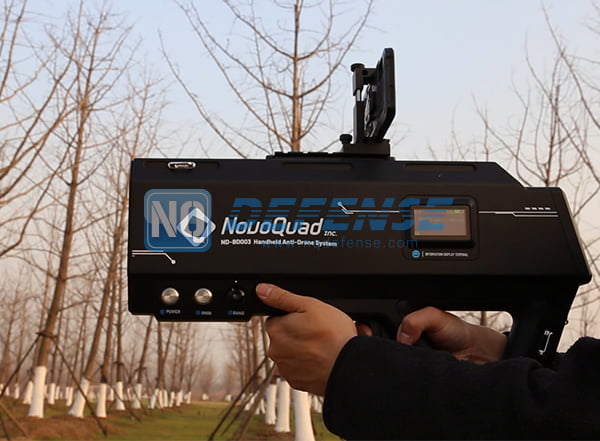
Available anti-drones/UAVs (Unmanned Aerial Vehicle) solutions for drone countermeasures and confrontations include “Soft Kill” and “Hard Kill”.
Typical “Hard Kill” solution includes physical method, such as attacking drone with object or shell, which involves the entire dynamic process, from finding the drone to attacking with lasers or ammunition.
Since “Soft Kill” solution is non-kinetic, usually fewer collateral damages will occur, and drone countermeasures become more flexible and cautious. Therefore, compared to “Hard Kill” solution, “Soft Kill” solution has a wider range of applications in densely populated areas and grand event sites, which is more secure and efficient.
“Soft Kill” solution involves the following advanced drone countermeasure technologies.
1.Radio Frequency Interference Technology
The principle of radio frequency jammer is to jam the communication between drone and its controller (or pilot) by signals with the same frequency. When the jamming signal is “stronger” than the signal sent by the controller, the drone will lose its connection and be forced to enter the pre-defined emergency state, which will cause the drone to fly back home, hover, or land.
Unallocated frequency bands, such as 2.4GHz and 5.8GHz, are used both for the communication between drone and its controller, as well as for FPV (First Person View) video transmission. Other less common radio frequency bands in commercial use include the ISM bands of 433 MHz and 915 MHz.
Jammer has two different types, i.e., Directional Jammer and Omnidirectional (360-degree) Jammer. Omnidirectional Jammer provides more coverage, while Directional Jammer (based on sector) provides more accurate coverage and will reduce accidental interference to other devices.
2.Global Navigation Satellite System (GNSS) Interference
The Global Positioning System (GPS) is probably the most commonly known navigation system, while other popular global navigation satellite systems, such as GLONASS, Galileo, and Beidou systems, are also used world widely. Commercial and consumer-grade drones/UAVs usually support multiple global navigation satellite systems.
Even if the radio frequency signals of drone have been jammed, the drone may still use GNSS to fly back to the origin or continue to fly along a preset navigation path.
By jamming with RF and GNSS, the communication and navigation links of the drone will be disconnected, and then the drone cannot continue to fly normally. Based on the preset strategies of the drone, once it is jammed, it may try to land, or just hover at that place where it is jammed.
3.Spoofing
“Spoofing” or “Hacking” drones involves protocol manipulation. This method is to simulate the controller and gain control of the drone while acting as a controller. After this drone countermeasure is successful, the system controller is allowed to reprogram the drone. Spoofing includes spoofing GNSS signals, which would mislead the drone direction effectively.
However, this method or similar deception techniques are not effective for all drones/UAVs. Therefore, there is always a “flaw” in the protection system, and even effective technologies are vulnerable to software changes made by drone manufacturers or service providers.
Our Anti-Drone/Anti-UAV Solutions adopt the drone countermeasure technologies mentioned above to efficiently protect low-altitude areas.
To learn more about our Anti-Drone System features and specifications, please click the link below.
